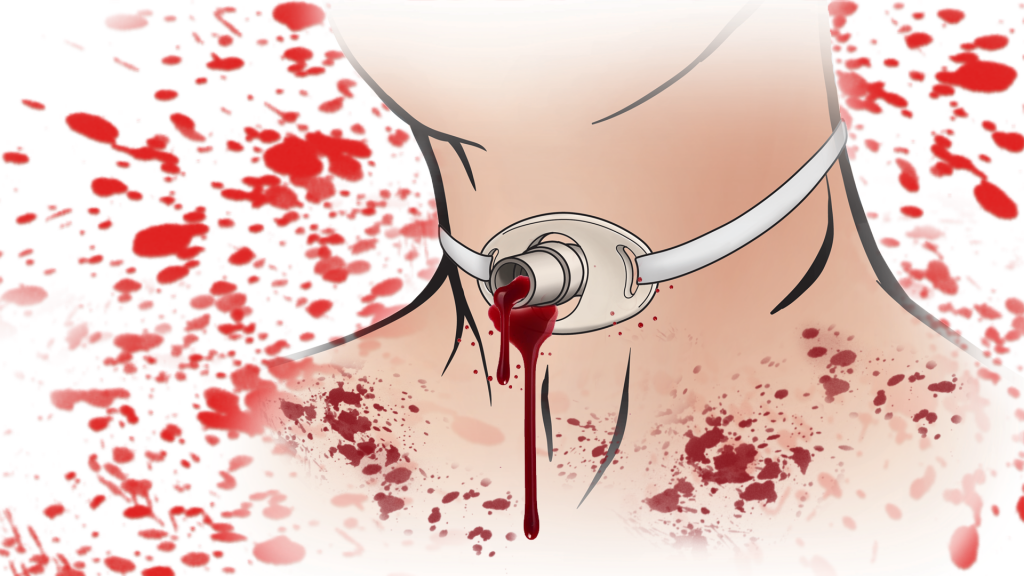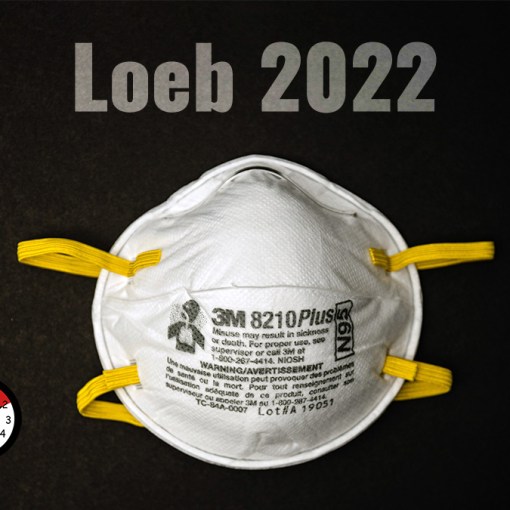Case
On another shift, the 45 year old man with a tracheostomy from the prior case is brought back into the emergency room. This time, he is actively bleeding from his tracheostomy site…
My approach
Get your PPE on. There is never a good time to get blood in your eyes.
Call for help early. Although ENT will not arrive in time to help you control the airway, surgical exploration may be required, so inform them early. Vascular surgery may also be needed in the case of a tracheo-innominate fistula. You will also want a respiratory therapist with tracheostomy experience.
Clear the airway of blood clots (suction).
If there is any reason for a bleeding diathesis, treat that ASAP. Although there is no evidence base for the practice, in the scenario of active bleeding, I would give tranexamic acid 1 gram IV.
Assess for tracheostomy obstruction.
For bleeding at the stoma site, apply direct pressure, with or without hemostatic dressings. You can also cauterize with silver nitrate.
For any bleeding deep to the stoma, have an assistant apply pressure at the base of the neck, in the sternal notch, to extrinsically compress the innominate artery.
If the patient has a cuffed tube, hyper-inflate the cuff. Add air slowly to prevent rupturing the cuff. The target should be around 50ml of air. If the tracheostomy is uncuffed, replace it with a cuffed tube and hyper-inflate. Hyperinflation will work about 85% of the time. If it doesn’t, slowly withdraw the tube while pulling anteriorly to apply pressure to the anterior aspect of the trachea.
If there is still bleeding, the site is likely distal to the tip of the current tube. Insert a cuffed endotracheal tube (either by intubating orally or through the stoma) deep to the bleeding to prevent aspiration of blood. Then insert one finger into the stoma and apply pressure to the innominate artery. Use your thumb in the sternal notch as external pressure, to pinch the innominate artery between your two fingers. If you cannot reach the artery with your finger, you may extend the tracheostomy with a vertical incision. Maintain this pressure while transporting to the operating room.
Although the tracheostomy site will be the most likely source of bleeding, blood from the tracheostomy tube could also represent hemoptysis. If blood continues to be expressed from a deeply seated endotracheal tube, continue with your assessment and management of the massive hemoptysis patient.
Notes
Even small amounts of bleeding should be treated as emergencies, as they may represent sentinel bleeding from a tracheo-innominate fistula. Most sources say that all late bleeds must be assessed by a surgeon. Others say any bleed greater than 10ml should be presumed to be arterial in nature.
Differential Diagnosis:
- Early post-op
- Irritation from suctioning/ manipulation
- Bleeding from surgical site (that was reason for the trach)
- Tracheitis
- Late
- Granulation tissue
- Infection of stoma site/ tracheitis
- Tracheo-innominate fistula (this is the life threatening cause we worry about)
- Blood from lungs, upper airway, or GI tract
- Bleeding diathesis
The innominate artery is also known as the right brachiocephalic artery
The title image is my adaptation of a image by Janet Fong, from the image library of the Department of Anaesthesia and Intensive Care at the Chinese University of Hong Kong (http://www.aic.cuhk.edu.hk/web8/Images.htm)
Other FOAMed Resources
National Tracheostomy Safety Project
Tracheostomy emergencies on EMCrit
Tracheostomy in the Critical Care Airway Mangement (CCAM) course handbook
Bleeding Tracheostomy on RESUS.ME
Bleeding Tracheostomy on LITFL
Approach to the Bleeding Tracheostomy in the ED on SinaiEM
Tracheostomy emergencies at Intensive
References
McGrath BA et al. Multidisciplinary guidelines for the management of tracheostomy and laryngectomy airway emergencies. Anaesthesia. 2012;67:1025-41. PMID: 22731935
Patel MR, Cannon TY, Shores CG. Chapter 242. Complications of Airway Devices. In: Tintinalli J et al. eds. Tintinalli’s Emergency Medicine: A Comprehensive Study Guide, 7e.New York, NY: McGraw-Hill; 2011. http://accessmedicine.mhmedical.com/content.aspx?bookid=348&Sectionid=40381728
Greenwood JC and Winters ME. Tracheostomy Care. In: Roberts JR, ed. Roberts and Hedges’ clinical procedures in emergency medicine, 6e. Philadelphia,PA: Elsevier; 2014.
Morris LL, Whitmer A, McIntosh E. Tracheostomy care and complications in the intensive care unit. Crit Care Nurse. 2013;33:(5)18-30. PMID: 24085825
Morgenstern, J. The bleeding tracheostomy, First10EM, May 26, 2015. Available at:
https://doi.org/10.51684/FIRS.431






2 thoughts on “The bleeding tracheostomy”